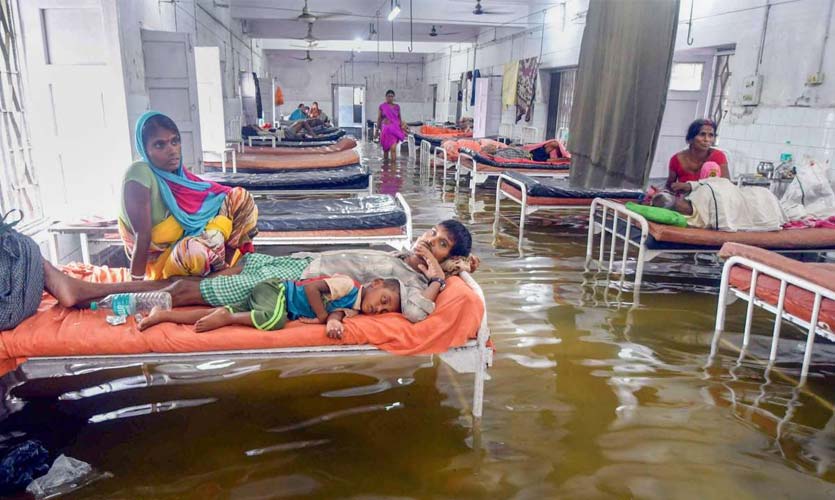The central government’s top think tank NITI Aayog’s report – ‘Best Practices in the Performance of District Hospitals’ – that was released this week, ranked Bihar as the worst state in terms of providing hospital beds. The report revealed that Bihar has only six hospital beds per one lakh people. The union territory of Puducherry topped the chart with an average of 222 hospital beds.
Bihar CM Nitish Kumar-led Janata Dal (United) is being criticised by opposition parties as the performance of the state’s health care system has reached lower than expected. According to the Indian Public Health Standards (IPHS) 2012 guidelines, district hospitals must maintain at least 22 beds per one lakh people.
Leader of opposition and former deputy CM, Tejasvi Yadav took a jibe at Nitish Kumar following the Niti Aayog report. “Congratulations to Nitish Kumar for ruling the state so well for the last 16 years that it reached the number one position from the bottom. Bihar has benefitted tremendously from the double engine government with 39 out of 40 MPs belonging to the NDA,” he tweeted.
Rashtriya Janata Dal leader Arun Yadav has also slammed the CM. “Who is responsible for this? CM Nitish must answer,” he said.
Meanwhile, Bihar’s education minister, Ashok Choudhary has dismissed the NITI Aayog’s report and said that the government has done a tremendous job in the state in the last 15 years. “The report is untrue. We have worked a lot in the health sector with the development of hospitals, nursing schools in districts,” said the minister.
What Does The Report Say?
According to the NITI Aayog report, the survey was conducted in 707 district hospitals across the 36 states and union territories in 2018–19 – just before the COVID-19 pandemic began in the country.
The report indicates that the country’s most populated states are struggling with maintaining the average number of beds in their district hospitals. The survey revealed low average numbers for these states: Andhra Pradesh (18), Assam (18), Bihar (6), Chhattisgarh (20), Gujarat (19), Haryana (13), Jammu & Kashmir (17), Jharkhand (9), Madhya Pradesh (20), Maharashtra (14), Punjab (18), Rajasthan (19), Telangana (10), Uttar Pradesh (13) and West Bengal (19). However, India’s total average stood at 24 beds per one lakh people.
The report also says that the country has seen a significant decline in the infant mortality rate since 2006, reducing from 57 to 32 per 1000 live births in 2018. Similarly, the maternal mortality ratio has also dropped from 212 deaths per 100,000 women in 2007–09 to 113 deaths in 2016–18.
According to the report, life expectancy in India has also significantly increased from 49.7 years in 1970-75 to 69 years in 2013-17.
What Is The Reason Behind India’s Poor Health Infrastructure?
In 2018, the Lancet’s report exposed India’s poor care system and said that nearly 2.4 million Indians die of treatable conditions every year. According to reports, at least 1.6 million people in India died because of inadequate health facilities.
The report further added that providing cash incentives to the patients is a good idea but it does not help in improving the country’s health care system. Janani Suraksha Yojana, which was launched in 2005, provides cash to women to deliver their children in health facilities. While it has increased the coverage of facility birth for more than 50 million women, these incentives have not improved maternal or newborn survival.
Read more: Assam: What Is The Anti-Encroachment Eviction Drive?
Poonam Muttreja, executive director at the Population Foundation of India said that the Indian government has been spending around 1 percent of the GDP on the country’s health infrastructure for the past 15 years. In 2004, the government had promised to spend at least 2-3 percent of the GDP over the next five years on the country’s health care system but unfortunately it never happened. Muttreja said that the Modi government, in 2017, committed to increasing public spending on health to 2.5 percent of the GDP by 2025 under the National Health Policy. However, no significant increase in health spending has been seen by the current government. Speaking with Indiaspend, Muttreja claimed that India has only 0.857 doctors per 1000 people.










